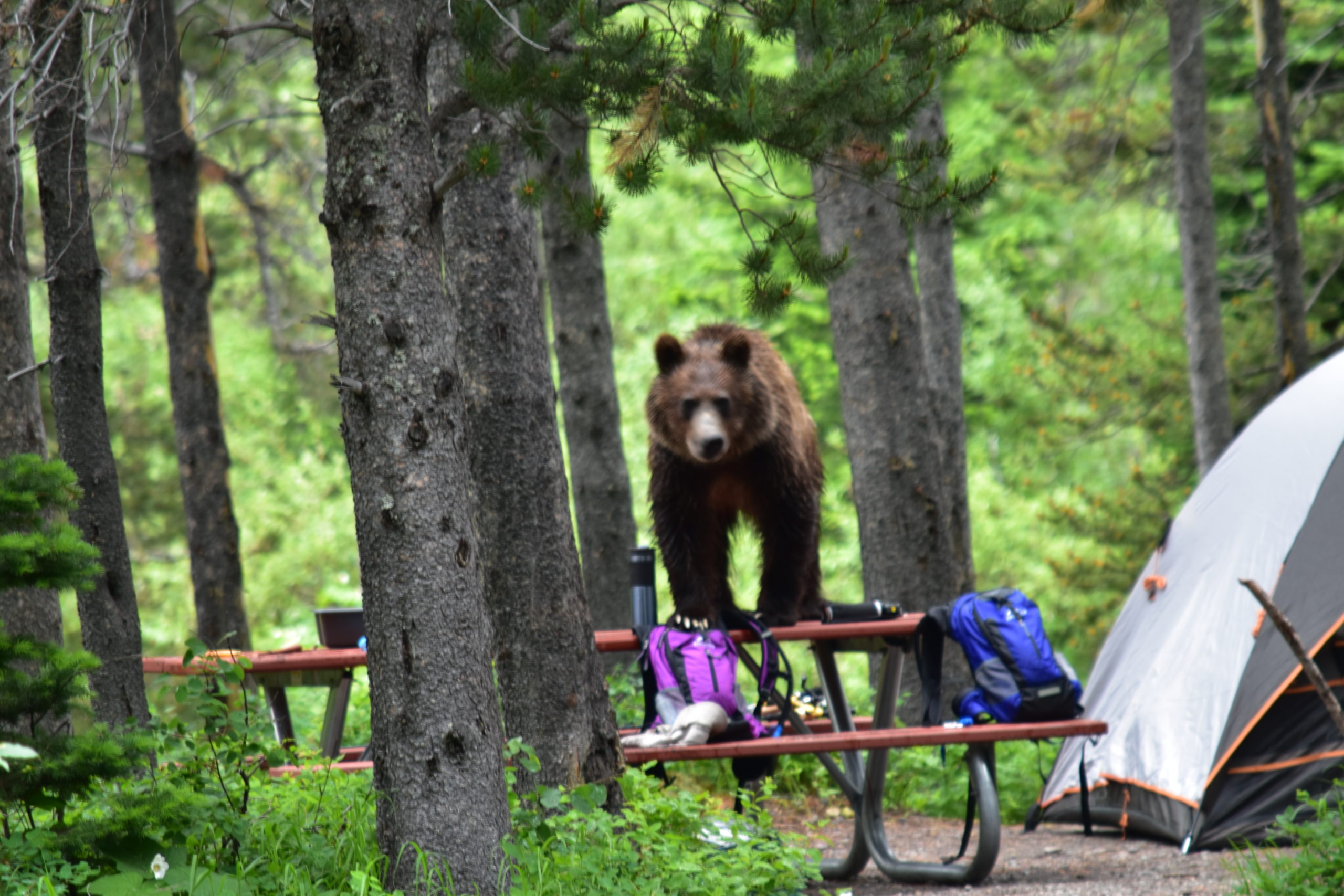Before You Go
Check with the local forest, park, or game and fish department office to get the most recent report on bear activity in the area. Be sure you know about any closures or special food storage regulations.

Hiking
- Hike in groups of three or more people. Avoid hiking after dark, or at dawn or dusk, when bears are most active. Use extra caution in places where visibility or hearing is limited such as bushy areas near streams.
- Be alert. See the bear before you surprise it. Watch for fresh tracks, scat, and feeding sites (signs of digging, rolled rocks, torn up logs, ripped open ant hills).
- Make noise. When hiking, periodically yell “Hey bear!” to alert bears to your presence, especially when walking through dense vegetation/blind spots, traveling upwind, near loud streams, or on windy days. Avoid thick brush whenever possible. Bears often use the same trails hikers do, and are attracted to sources of food like berry patches or carcasses.
- Carry bear spray and know how to use it.
- View and photograph all wildlife from a distance. You should never come closer than 100 yards to a bear.
Camping
- Keep food and anything with a scent out of tents.
- Dispose of garbage in provided containers; otherwise, take it with you and dispose of it properly elsewhere. Do not bury or burn garbage.
- Properly store unattended food and anything else with a scent. Food storage options are:
- Bear boxes
- Hard-sided vehicles (car, truck, RV). Avoid leaving attractants in vehicles for extended periods of time (backcountry trips)
- Certified bear-resistant containers
- Electric fencing, depending on local regulations and model or configuration of fence.

